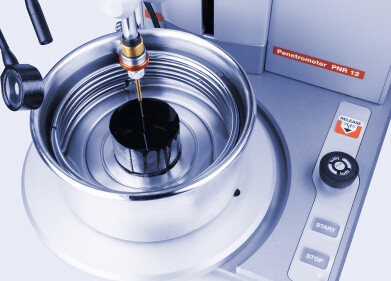Measurement and testing
What Are the Different Types of Crude Oil?
Dec 17 2019
Crude oil powers economies and industries around the world, with global demand for the resource hitting 99.3 million barrels per day in 2018. By 2020, analysts predict daily oil demand will soar to more than 100 million barrels per day. While all crude oil is sourced from beneath the earth's surface, including subterranean pools and reservoirs, sedimentary rocks and tar sands, it's not a single commodity and comes in a myriad of different varieties.
Categorising light and heavy oil
The quality and characteristics of crude oil vary significantly depending on geographical region. Oil is usually categorised based on two key characteristics - density and sulphur content. Low density crude oil is classed as "light" and is free flowing at room temperature. It has a low viscosity and high API gravity as a result of light hydrocarbon fractions. High density crude oil is classed as "heavy" and is usually derived during the petroleum distillation process. It's highly viscous, doesn't flow under normal conditions and has API gravity of less than 20°. Density is measured using the official gravity scale developed by the API (American Petroleum Institute). In general, higher API gravity translates to better oil quality.
Sweet or sour?
Another category used to categorise oils is sulphur content. Oil with low sulphur content is classed as "sweet" while oil with high sulphur content is "sour." According to the New York Mercantile Exchange, to be classed as sweet crude oil must contain less than 0.5% sulphur. Anything higher is classed as sour. In general, light sweet oil is more desirable as it's easier and cheaper to extract, transport and refine. For this reason, it's generally accompanied by a higher price tag. In comparison, heavy sour oil can be difficult and expensive to extract.
WTI vs Brent
WTI versus Brent (WTI) and Brent are both classed as light sweet crude oils. Brent is used as a global oil price benchmark, while WTI is used as a point of reference for oil prices in the US. The two differ slightly in characteristics, as Brent is extracted from the North Sea and WTI is produced primarily in Texas, Louisiana and North Dakota. One of the major differences is sulphur content, with Brent containing around 0.37% and WTI slightly sweeter at 0.24%. As a result, Brent is favourable for producing diesel fuels while WTI is coveted for producing gasoline.
While some fuels derived from crude oil are ready to use, others are enhanced with additives. If you'd like to know more about the latest technologies being used to monitor performance modifiers, don't miss 'ASTM D7751: Determination of Additive Elements in Lubricating Oils by EDXRF Analysis'.
Digital Edition
PIN 25.6 Buyers' Guide
January 2025
Buyers' Guide Directory - Product Listings by Category - Suppliers Listings (A-Z) Articles Analytical Instrumentation - ASTM D7042: The Quantum Leap in Viscosity Testing Technology -...
View all digital editions
Events
SPE Hydraulic Fracturing Technology Conference and Exhibition
Feb 04 2025 The Woodlands, TX, USA
Feb 05 2025 Guangzhou, China
Trinidad and Tobago Energy Conference 2025
Feb 10 2025 Point Lisas, Trinidad
Feb 11 2025 Lagos, Nigeria
Feb 13 2025 Manama, Bahrain
.jpg)


















